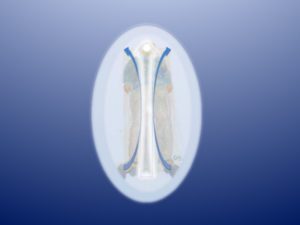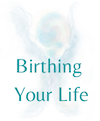In previous posts we have explored how early trauma may arise in both clients and practitioners during session work. The purpose in enhancing awareness of this phenomenon is to support us in healing rather than being imprisoned by our history.
How we deal with reactions based on our history can make the difference between reinforcing old patterns and healing. If, for example, we are able to see ourselves freezing like a helpless infant, or reacting like a frustrated toddler who needs to be seen and heard, we can acknowledge the triggered feelings and tend to the little one within us. In our work, we can hold our inner child in a safe, nurturing place within us and get on with our work as practitioner. We can re-visit the wounded little one later with the support of a trained supervisor or psychotherapist.
If these states are arising for our clients, we can help them to orient to  resource and support, to slow down, to be present with sensations and our safe relational field in present time. We can facilitate them in differentiating between how it was back then and how it is now in the treatment room. When early states arise in ourselves as practitioners, we may need to do the same with ourselves.
resource and support, to slow down, to be present with sensations and our safe relational field in present time. We can facilitate them in differentiating between how it was back then and how it is now in the treatment room. When early states arise in ourselves as practitioners, we may need to do the same with ourselves.
What is always helpful when trauma arises in session work is first to slow things down. Things tend to accelerate with trauma reactions. When we slow down, we can be more at choice. We can then begin to de-compress the experience and make different, more appropriate choices, rather than acting out of habit.
It is important to practice differentiating between what happened back then and what is happening now. This takes practice, usually requiring facilitation from a trained therapist. Once we have learned to do this for ourselves, we are much more able to support our clients in doing the same.
In the midst of any kind of confusion, including that related to reactions based on early trauma, it is essential to come back to our resources. What supports us in being able to be present with what is arising? What enables us to remember that we are our current age with our adult competencies and not a frightened, shocked little infant?
When in doubt about resource, we can always come back to an awareness of breath and ground – our relationship to the support of gravity. We can calm ourselves by taking a deep breath. We can acknowledge that we are in a tight spot and intend to orient towards support. Taking a deep breath can support healthy parasympathetic nervous system functioning. Awareness of sensations and present time will also support the social engagement system coming online.
Orienting To Health and Resource
 Slowing down, settling and resting in support and resource are basic biodynamic approaches. Biodynamics involves orienting to the ever-present health. The long tide, for example, is a stable manifestation of the Breath of Life, unaffected by life conditions. Dynamic stillness similarly represents the ultimate health, untouched by whatever trauma we may have endured.
Slowing down, settling and resting in support and resource are basic biodynamic approaches. Biodynamics involves orienting to the ever-present health. The long tide, for example, is a stable manifestation of the Breath of Life, unaffected by life conditions. Dynamic stillness similarly represents the ultimate health, untouched by whatever trauma we may have endured.
When confronted by an apparently unresponsive system in our client, rather than trying to do more, we can practice settling deeper, orienting to dynamic stillness, long tide, resource and relationship. We can also orient to the embodied life force of potency and listen more deeply to how it may be expressing.
A client lost in dissociation may be supported by our orientation to the gateway to dynamic stillness presenting at the fullness of an inhalation of fluid tide. Where there is sympathetic activation, orienting to the similar gateway to stillness at the end of the exhalation phase of fluid tide can help with settling. Dynamic stillness is always available as a resource. We can choose to remember it and practice doing so. This also applies to long tide, an ever-present representative of the Breath of Life, unaffected by life conditions.
We can support ourselves along with our clients in being present with whatever is arising. If we can find curiosity, we are likely to find the urgency, panic, fear, shame, anger, etc. becoming less relevant. We may even find a new birth happening in this very moment. A birth into health.
Keys to being with early trauma:
-
Acknowledge the activation
-
Slow down
-
Orient to resource, breath, sensation, fields within fields of support (physical body suspended within fluid body suspended within vast tidal body of long tide suspended within the spacious ground of dynamic stillness)
-
Facilitate differentiation. e.g.: What you are feeling now may have been how you felt back then. Back then things were too fast for you. Back then it was scary/dangerous. Can you feel my hand/the support of the treatment table/the felt sense of your resource now?
-
If it is your own activation as practitioner, hold your little one in resource and safety (in your heart if that feels right) and arrange a time to see your supervisor or therapist to explore and integrate what has arisen.


